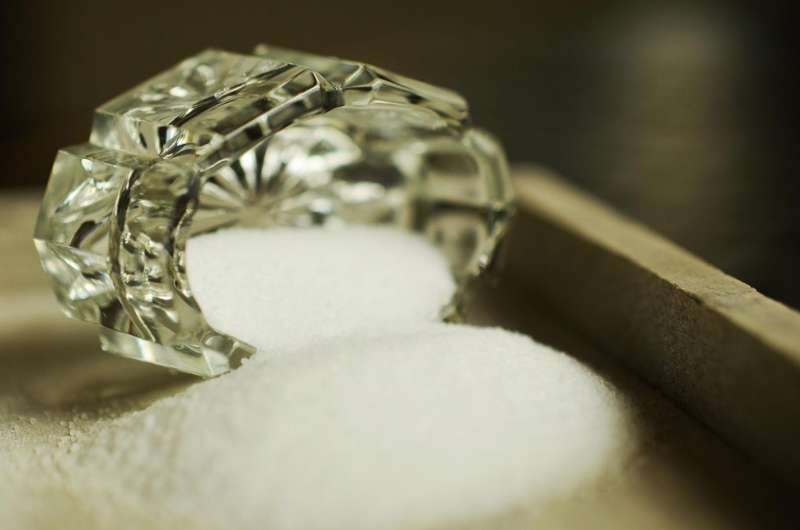Credit: CC0 Public Domain
Salt is a hidden enemy in children's diets. So concludes a study by researchers from the Complutense University of Madrid, which suggests that over 80 percent of Spanish schoolchildren consume excess salt; this is associated with a greater risk of high blood pressure, osteoporosis and obesity.
Salt is possibly the oldest and the most widely used food additive, a condiment used to give products their characteristic savoury taste. But in addition to its culinary properties, salt causes numerous health problems if consumed in excess.
For this reason, a team of scientists from the Complutense University of Madrid (UCM) has analysed salt intake in children, who are a particularly sensitive group as they are at a stage of life when dietary habits are formed.
The results, published in the European Journal of Nutrition, demonstrate that children consume an average of 7.8 g of salt per day, meaning 84.5 percent of those under 10 years old and 66.7 percent of those over 10 eat more than the amount recommended by the World Health Organization (between 4 and 5 g of salt a day, respectively).
"Consumers are generally aware that excess salt intake increases blood pressure figures in adults, with the resulting risk of hypertension and cardiovascular disease," says Aránzazu Aparicio, a UCM researcher and the paper's lead author.
"However, people are not so prudent when thinking about the younger population," she adds. Diverse studies have for years shown that salt intake can also contribute to raising blood pressure in children, predisposing them to high blood pressure as adults.
The experts explain that eating salty foods from childhood leads to the likelihood that it will continue into adulthood. For this reason, it is essential to reduce salt intake from young age; to do this, researchers have to know what people are eating.
"Many parents aren't aware that their children, or they themselves, are eating too much salt. They think that reducing the amount added to food while cooking is sufficient to bring down intake," says the researcher.
But in most industrialised countries, such as Spain, only 20 to 25 percent of the salt consumed comes from table salt.
What are the sources of the salt children are consuming?
Aparicio says that "the majority of the salt eaten by adults and children comes from the salt 'hidden' in food, especially in processed foods."
Specifically, the products that contribute the most salt to Spanish children's diets are cured meats, including ham, followed by bread, pizza, ready meals, stock cubes and sausages.
"We clearly do have to control the salt we add to our meals when we eat. However, these results also show the need for the food industry to act to reduce the salt content of processed foods," the expert says.
Some sectors of the food industry have already begun to reduce the salt content of their products, following a gradual process of reduction so that consumers do not notice the difference and reject the products. This has been the case with bread, for which salt content was gradually reduced from 22 g per kilogram of flour to 16.3 g per kilogram over four years. Consumers did not complain about the flavour or stop consuming the product.
More information: A. Aparicio et al. Estimation of salt intake assessed by urinary excretion of sodium over 24 h in Spanish subjects aged 7–11 years, European Journal of Nutrition (2015). DOI: 10.1007/s00394-015-1067-y
Journal information: European Journal of Nutrition
Provided by Plataforma SINC




















